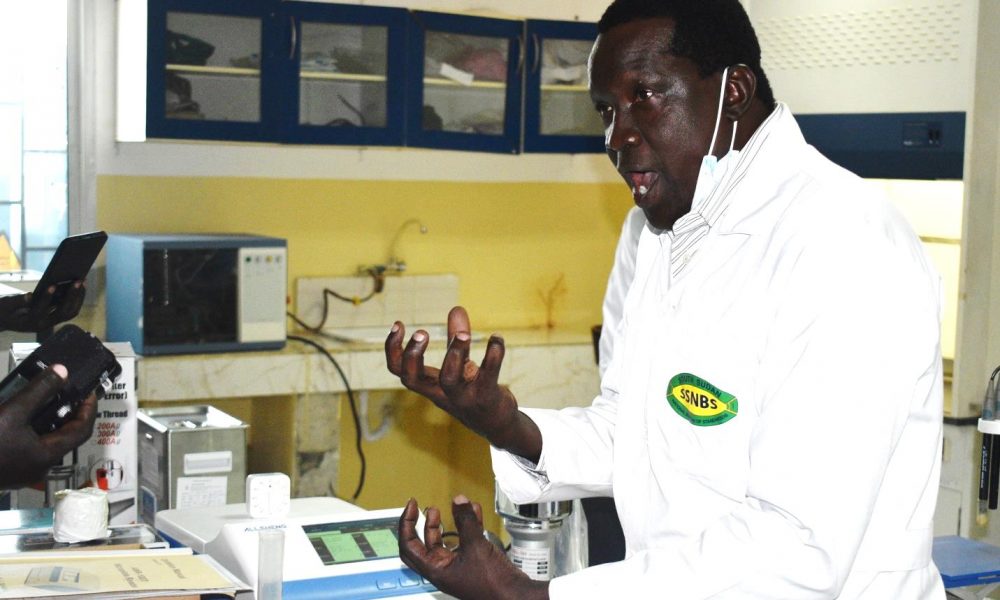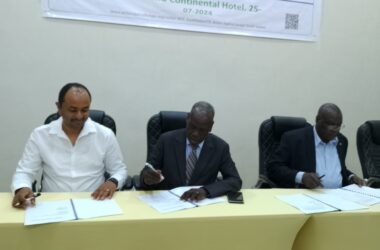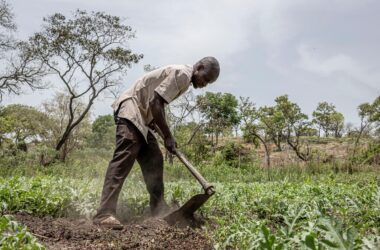By William Madouk
South Sudan National Bureau of Standards (SSNBS) has increased its surveillance against substandard products.
This follows equipping and upgrading of SSNBS’ state-of-the-art, multi-functional laboratory in Juba to carry out all testing on edible products.
For safety and healthy food, things like cooking oil, honey, cereal, and meat, just to mention a few, are to be tested to ensure that they meet standards before they can be consumed by consumers.
Previously, SSNBS has shown concern over the increasing rate of substandard products; for instance, the recently impounded Ugandan toxic maize forced the Bureau of Standards to keep its eyes wide open.
Plans are also put in place to conduct regular market inspections and raise awareness among traders about below-average foodstuffs.
During an inspection of SSNBS-Juba Central Laboratory on Monday, Mary Gordon, the chief executive officer of the Bureau of Standards, disclosed the existence of three lab sections with all the latest testing instruments ready for use.
She revealed her moves in putting the final touches on the training of laboratory technicians to handle the testing equipment and obtain certification as lab professionals.
“As you see them now, this is the biggest instrument we have, but they are the latest. What they call the state of the arts they are in this room,” she said.
“Then that one is, of course, general chemistry, where all the testing and chemistry happen. And then there is microbiology,” she explained.
She added that they would work to make sure that this lab is certified, but that could only happen if those staff got proper training, which is slated for November 2023, although some are well off for the job.
“The lab is not certified yet; we’re going to work through the process of certification. Certification does not just require the instrument. It takes the people as well,” Mrs. Gordon noted.
“So, they have to be properly trained on how to use instruments and get results that can be trusted.”
“The instruments are all ready now because they’ve been cleaned, they’ve been calibrated, and they’re ready for use.” She added.
Mrs. Gordon said they are a scientific-based body, and all results are always based on acceptable global standards and procedures, not on assumptions.
Flora Keji, a lab expert, said, “These are the fridges where we store the samples; in case we want the samples to be in solid form, we store them here. If we want to maintain it in liquid form, we store it there,” Keji explained.
“We also have incubators; this incubator varies in temperature. There are so many incubators here, and their temperatures are different. Of course, the bacteria that we are culturing need a different temperature and time,” she continued.
Thereafter, a homogenizer—a piece of laboratory or industrial equipment used for the homogenization of various samples culturing—and then a colony counter are used to show results.
“Of course, after culturing and putting it in the incubator, we now come and calculate and see the results. We cannot see the results from the petri dish. We have to put them here on the colony counter so that we can count the number of bacteria that have grown,” she added.

He cited that when samples are determined, they could then be sent either to a chemistry or microbiology lab for testing.
“So, the sample comes, we receive it, and we do the registration with the details of the sample. After that, we determine the sample,” he clarified.
Another lab expert, Mr. Deng Mabyei, said, “This HPLC, we use it for analyzing the aflatoxin B1, B2, and G1, G2. And all sorts of other nutritional parameters, like proteins, glucose, and sucrose,
“This is an atomic absorptor spectrometer; this is used for heavy metals, for analyzing heavy metals,” he added.
Others include the DR5000 used for analyzing water, the fluorometer for polarization of sugar, the refractometer for analyzing honey, and some parameters of oils, among other testing instruments.
Mr. Emmanuel Okeny Augustino, a lab analyst at the microbiology lab section, said the autoclave kills all microorganisms.
“To make sure that we get pure results without any contamination from microorganisms, we have to autoclave them at a very high pressure of 121 degrees Celsius. At that temperature, we make sure we kill all the microorganisms.”
Other instruments include Plate Count Agar (PCA), which is a microbiological growth medium used to enumerate and isolate bacteria in various samples.
Also, a lab technician called *Mario* in the chemical department explained the different instruments for analyzing foodstuffs, such as cooking oil.
“When we are analyzing, we open this one, and we will dip a sample with a test tube. After processing, this resonance will give you the wavelength of the sample.” Said Mario.
“Then you go with a standard; we will give you exactly the range that is required. If it is below or above, then it will not be required for consumption. If it is below, then it is fit for consumption,” he added.
Another is the ‘Mocha Meter’ instrument – used for analyzing all cereals, for instance, wheat flour, maize, grains, and sugar, among others. It includes an oven, shaker, distillers, and centrifuges, among others.
In June 2023, the management of the Bureau of Standards signed an agreement with a Japanese private firm, East Africa Automobile (EAA), for mandatory motor vehicle and spare parts inspections before entering the country.
The 5-year contract entails the provision of services for pre-shipment verification of product conformity with the standards of all motor vehicles and spare parts imports to weed out substandard products.
On May 15, when South Sudan impounded 62 trucks of maize grains with high levels of aflatoxin, it sparked an uproar among traders and the Uganda Bureau of Standards, which became the straw that broke the camel’s back.
But after East African Community (EAC) experts in their laboratory retests confirmed red-flagged Ugandan maize to be toxic, the Ugandan authorities finally agreed to dump the condemned consignment.




